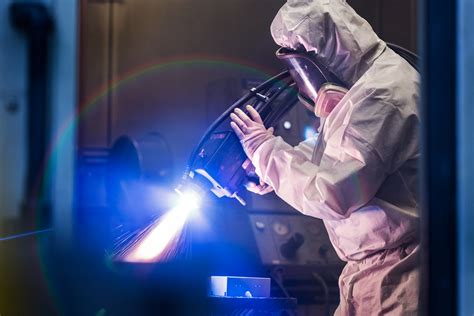
14 Feb How Plasma Spraying Works
When you are considering using plasma spray coating for your next project, you might be wondering exactly how the process works. First, you need a regulated environment. Then, you’ll need to apply a high-tech coating. The process involves introducing a feedstock into a plasma jet. Typically, the resulting particles are extremely hot, and the flame from the torch causes molten droplets to form on the substrate. The droplets can adhere to the substrate or stand alone. There are several technological parameters that determine the bonding strength and particle interaction with the jet, as well as the size and shape of the deposit.

The process is relatively simple. Once a high-voltage electrical current is applied, the plasma jet will form. The particles then are treated and injected within the plasma jet, forming a coating. The plasma spraying process is highly efficient and can protect a variety of metals, including cast iron, aluminium, and steel. While the application process is relatively simple, the benefits of this process are numerous. For more information, consider Plasma polymer composite at a site like Poeton
The process involves a high-voltage arc, which carries a plasma jet. This arc is created by a small, low-pressure electrical current. The energy of the discharge is transferred to a gas mixture and accelerates it toward the substrate. This coating is made of a variety of materials, and can be applied to a variety of surfaces. In addition to aerospace and medical industries, plasma spraying can be used to coat anything from glass to metal.

Another benefit of plasma spraying is that it provides a high degree of protection from rust. As mentioned, rust is a common problem with metal workpieces that contain iron. Over time, this chemical reaction can occur, causing a layer of rusted material to form on the workpiece. In this case, the spraying process is the best solution. The plasma jet creates a protective “shell” over the workpiece.
To produce a coating, HA powder is injected into a plasma flame. The molten particles reach a temperature of 1000 degrees C. Then, they form a thin layer of HA particles that undergo phase transitions. During this process, it is important to consider that HA particles must have a large surface area in order to achieve the desired coating. Moreover, the size of the HA particle must be small enough to prevent the overall crystalline phase from being deposited on the substrate material.
In a plasma spraying process, high-temperature HA particles are injected into a plasma flame. The particles become molten and rapidly cool down, forming a protective layer on the substrate. The spraying process is very effective and versatile. Many different industries employ this process for a variety of applications. These include the automotive, aerospace, and medical industries.

No Comments